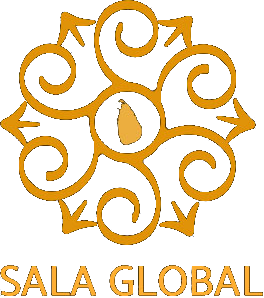Jewellery, masks, lacquerware and more – discover the colourful and creative arts and crafts unique to Sri Lanka.
Colour, creativity and commerce abound when it comes to arts and crafts in Sri Lanka. Tradition and heritage are king, and people have been creating everything from jewellery to masks, lacquerware and ceramics here for time immemorial. While it hurts a little to bring the word ‘souvenir’ into such a proud piece of cultural heritage, sometimes two plus two equals four. These distinctive mementoes are available throughout the stores of Colombo but travel outside the capital to see the work that goes into making them. Prepare to be spellbound as deft hands weave intricate lace patterns out of nothing, or be amazed as the pottery wheels of Molagoda do their thing.
Masks
Masks are deeply connected to Sri Lankan folk-lore and take on a functional role where they are used in healing rites and rituals. Known popularly as devil dances, some are dance-drama performances that tell an elaborate story and is enacted by experienced dancers and actors wearing these masks.
One of the most popular and ancient acts is the 18 Sanni that are thought to represent diseases or ailments caused by yakkas (devils). Eighteen masks carved to represent the torment felt through these diseases are worn by an exorcist and a tovil, a devil dance, is performed. Other popular mask dances or dramas are Kolam and Raksha, one a comedic performance and the other masks mainly used in festivals and processions.
Ambalangoda is known to be the heart of mask carving with many shops dotting the roadside as you drive along this coastal town. If you happen to pop into one of the stores, you will be able to see how these masks are carved and painted with brilliant colours and take one along as well.
Handloom
Long ago handloom was reserved exclusively for the royalty and the renowned in the country and special villages were designated to practice the craft. However, now Handloom is generally found around the island as a self-employed or entrepreneurial activity where this skill which has been passed down from generation to generation has been revived and practised.
Among handloom products in Sri Lanka are, curtains, cushion covers and other household decorative items, saris and garments as well as everyday items such as books and bags.
Handwoven fabrics, with their vibrant colours and simple or elaborate patterns, have become a favourite among shoppers.
Dumbara weaves
Dumbara weaves, a unique work of art once found only as decorative pieces and mats are now seen integrated into the modern world; it can now be seen infused with designs of wall hangings and decorative items, bags and purses, rugs and carpets along with household utilities such as table mats and sheets.
The art is said to have originated in the village of Thalagune Uda Dumbara, where still a handful of Dumbara weavers—descendants of the ones who practised the craft during the Kandyan era still remains carrying on the legacy. The skill is well guarded within the few families that hold the secret to this amazing art.
The designs found on the Dumbara weavers products are specific to the Sri Lankan culture and reflect the traditions within its intricate weave-work.
Lacquer work (Laksha)
These skillfully made traditional handicrafts are a very popular choice amongst tourists and seekers of tokens depicting Sri Lankan culture. Originating in central Sri Lanka, the knowledge of lacquer making has spread throughout the island over the centuries.
The base product for the traditional lacquerware is a wax derived from a species of insects, which is imported directly from India. Whilst the age-old methods are used by some, new tools and procedures introduced with time are preferred by the others in the making of these complex and exquisite designs.
Colourful and bright walking sticks and handles of flags and hand-fans, bowls, vases, containers and decorative items made with lacquer work are seen island-wide.
Making of traditional drums
The traditional drums, or Bera, is undoubtedly part of the Sri Lankan culture.
The special skill and craftsmanship required for the making of these drums are possessed by a numbered few—communities across Kurunegala and Hodiyadeniya in the Kandy district.
The body of the drum is fashioned mostly out of Jack tree, and the skin is made out of an animal hide. After long hours of divided work within each group, the keen and detail-oriented drum makers present beautifully shaped and designed drums with the right sound.
Brass work
Products made out of brass have been used in everyday life in Sri Lanka. Brass products are either wrought or cast and adorned with carvings or designs. Some of these products include artefacts used for religious purposes such as oil lamps, as well as household utilities including boxes, baskets, chairs, trays, containers, locks, hinges and vases.
.



